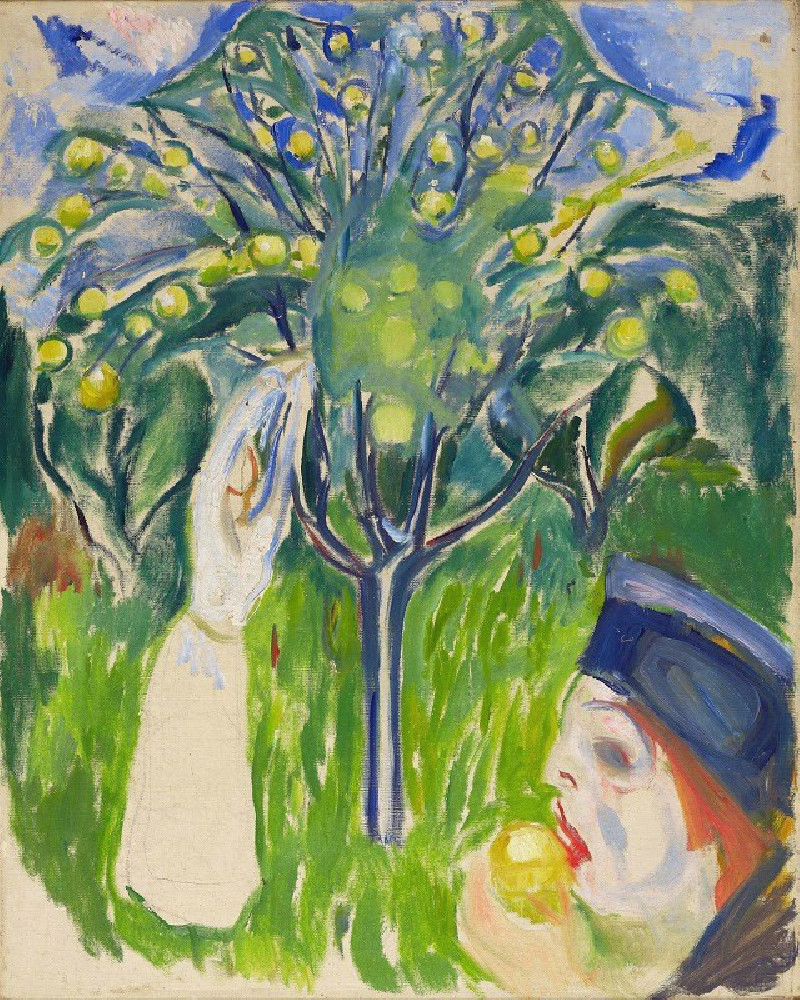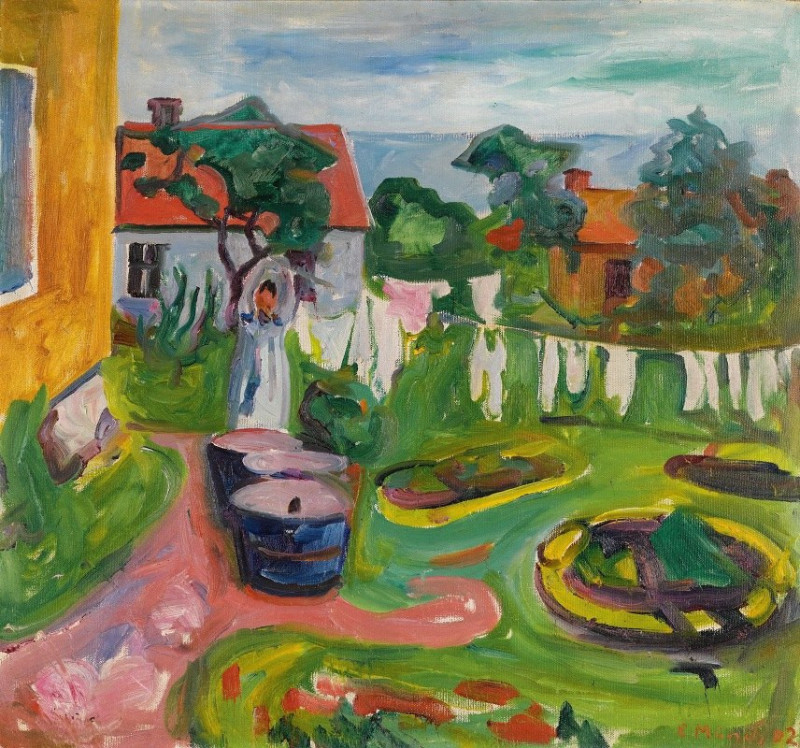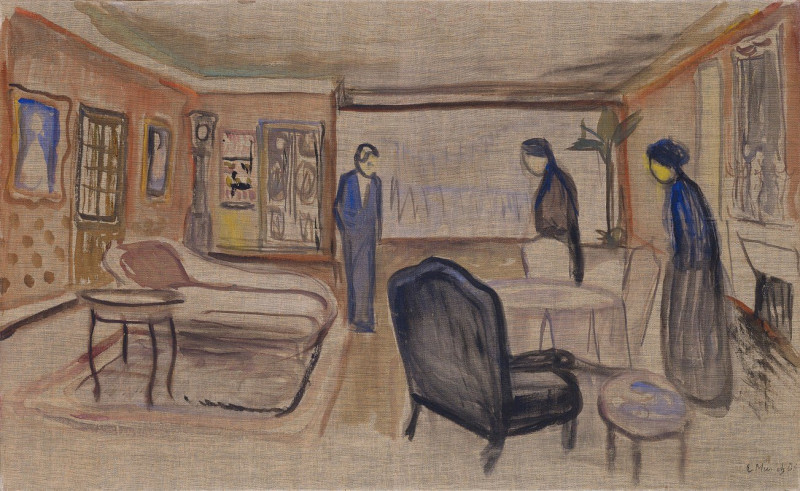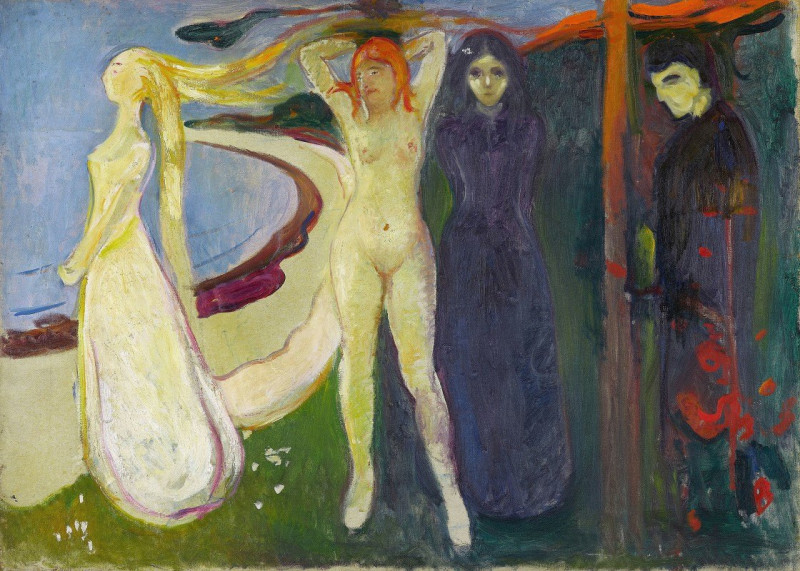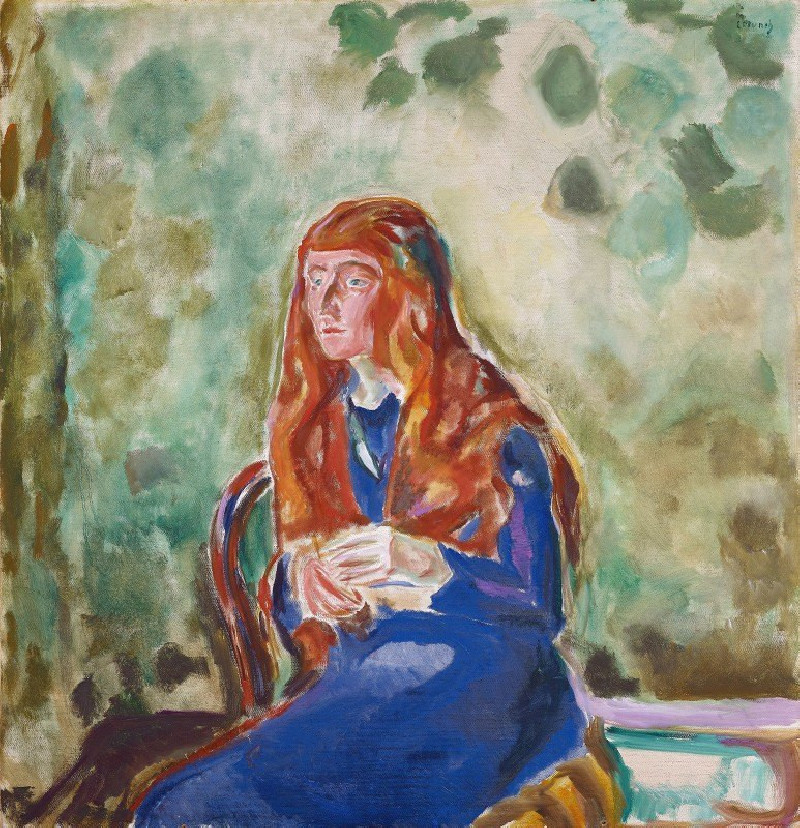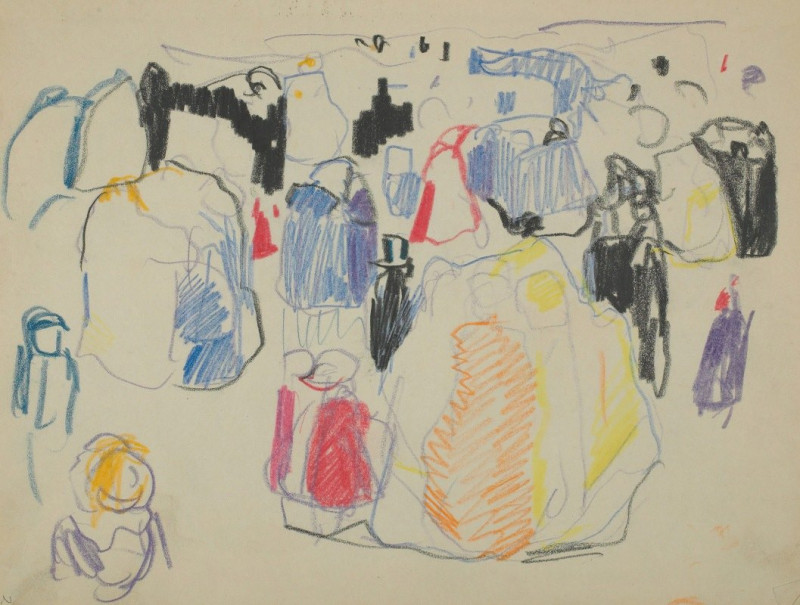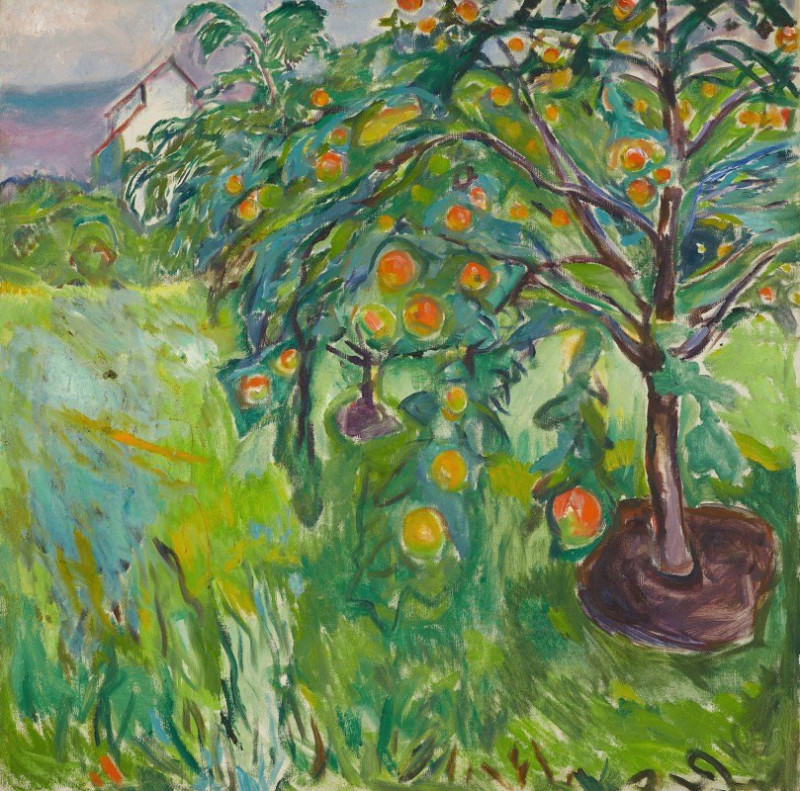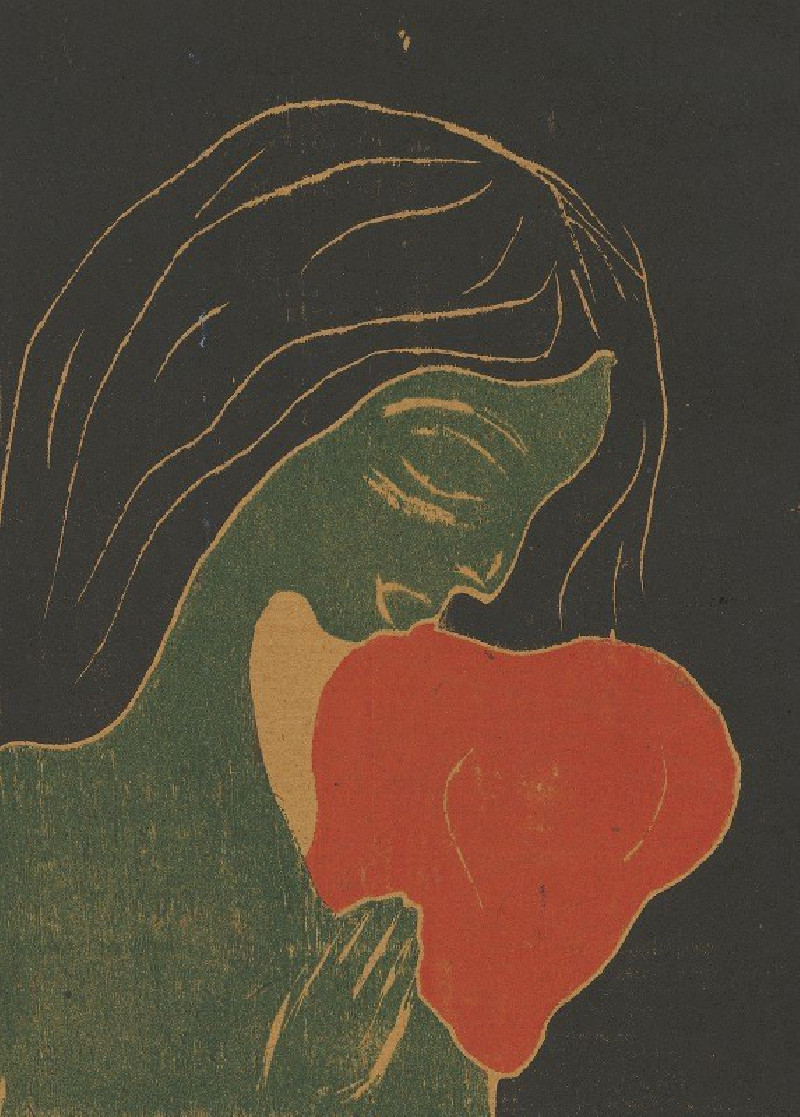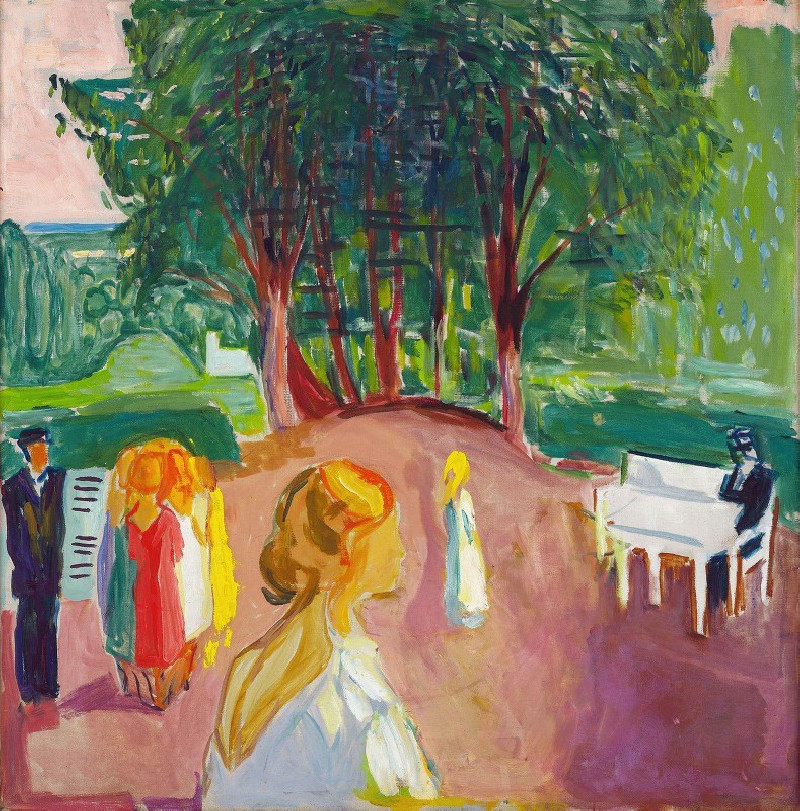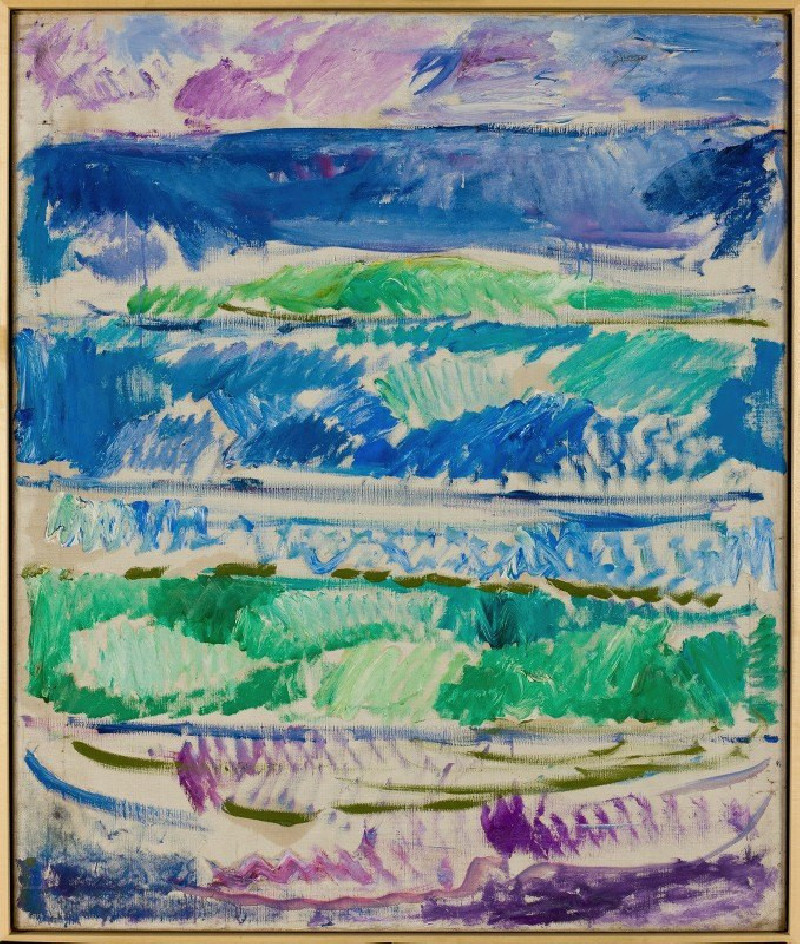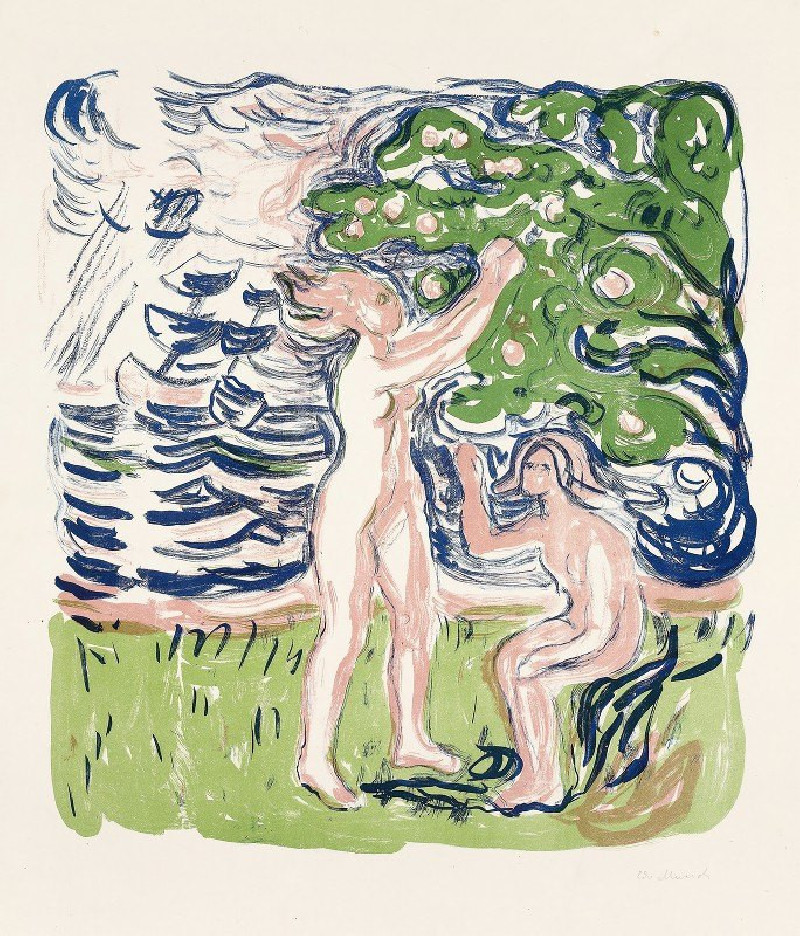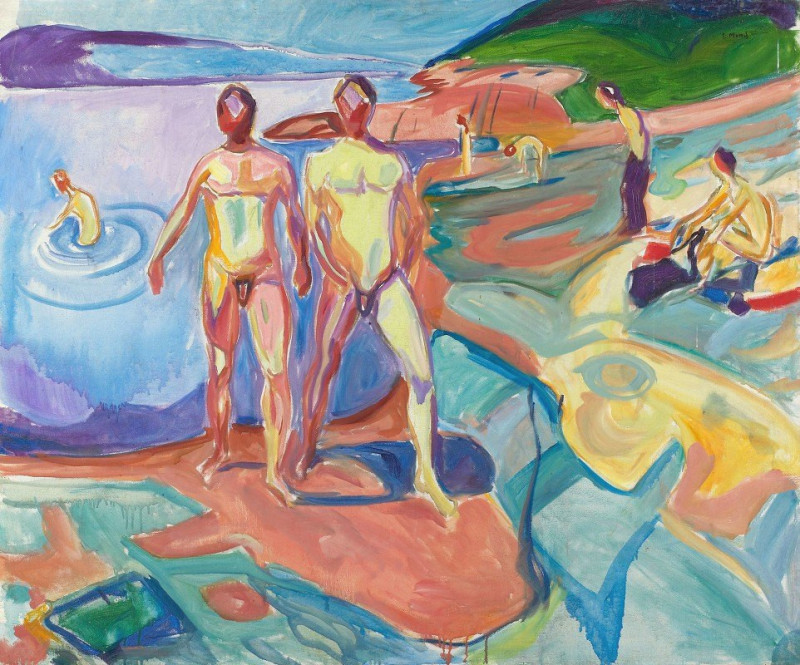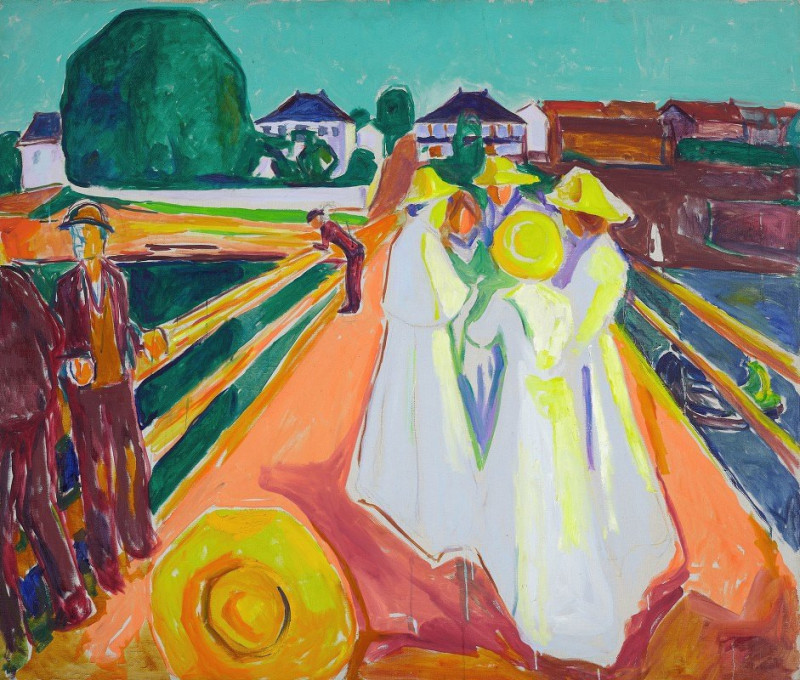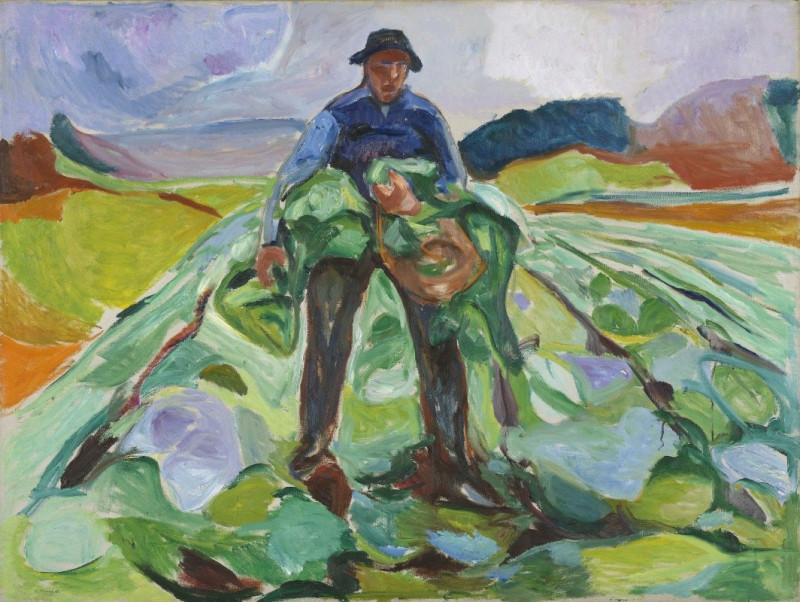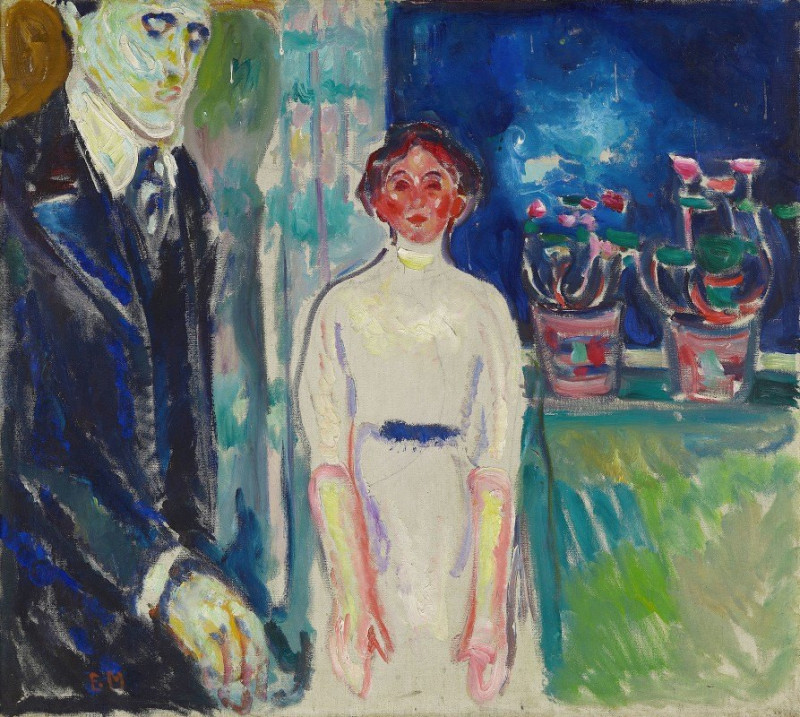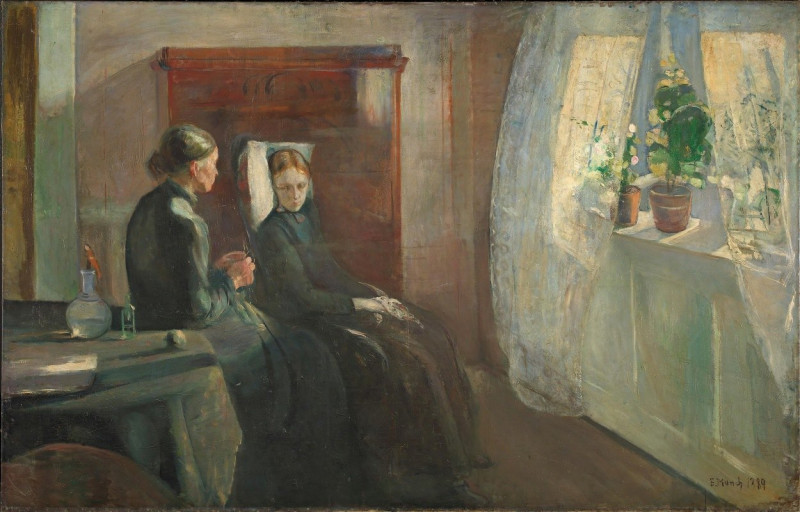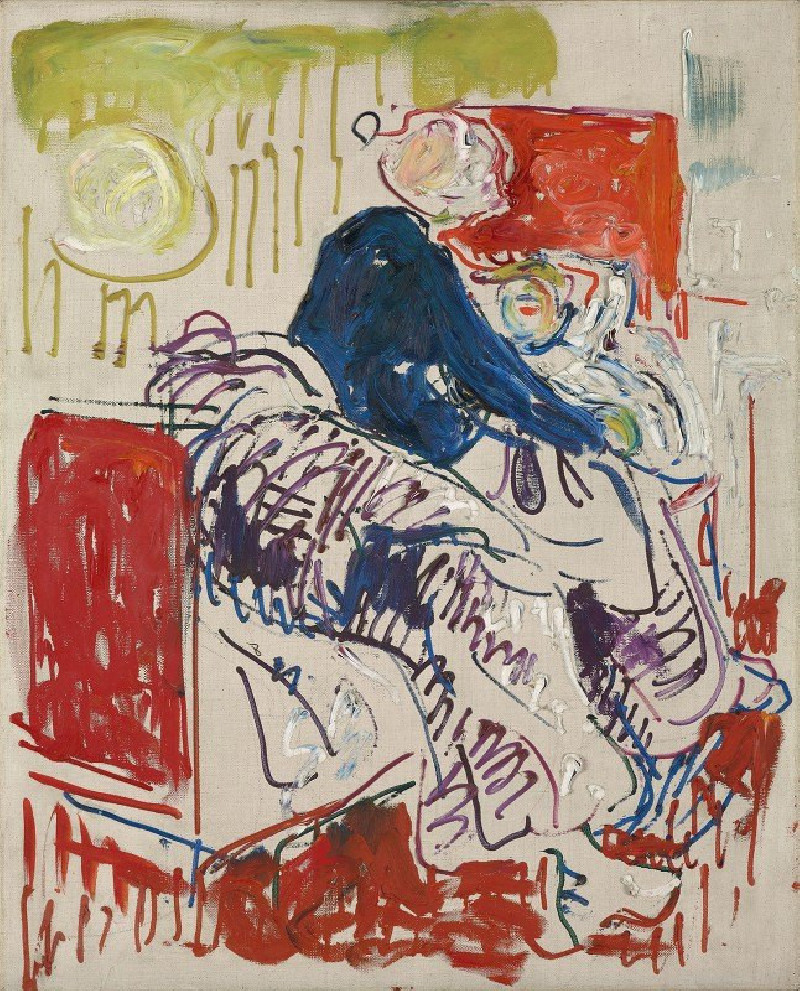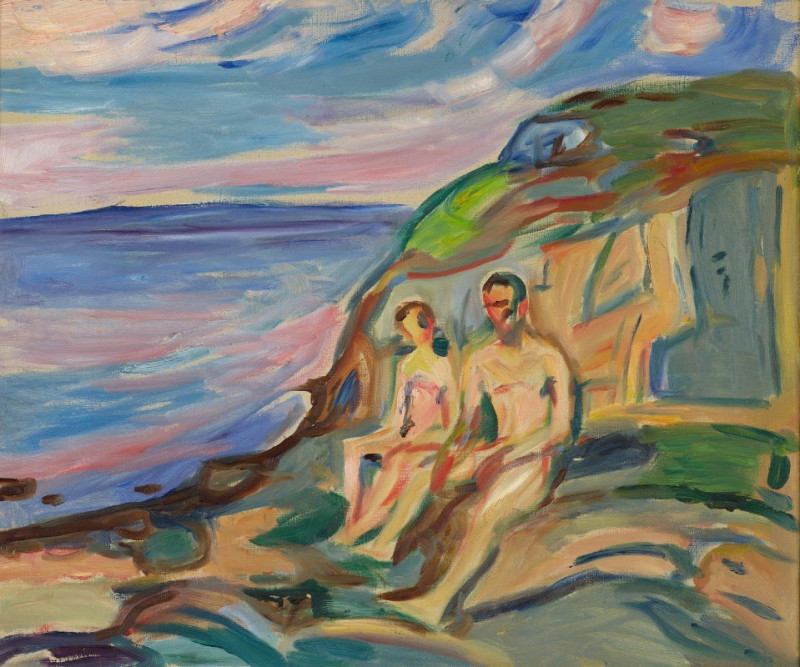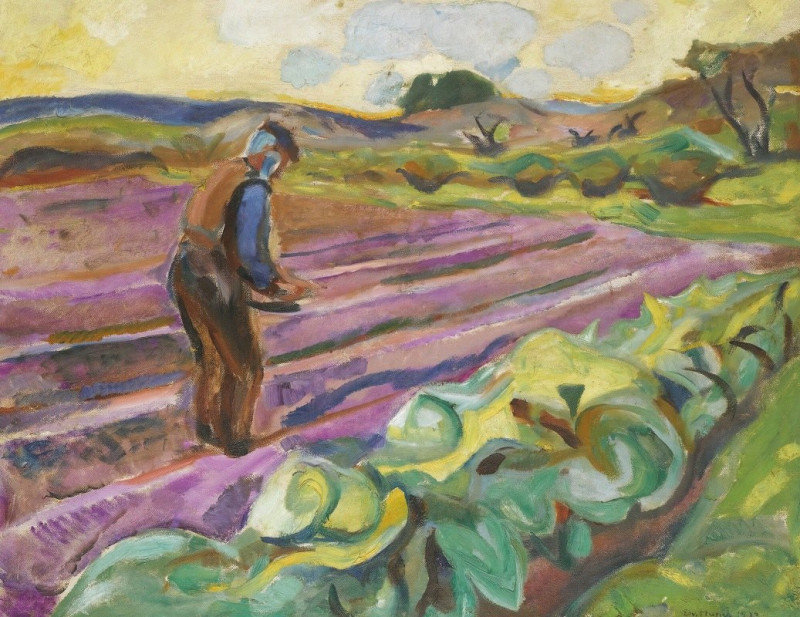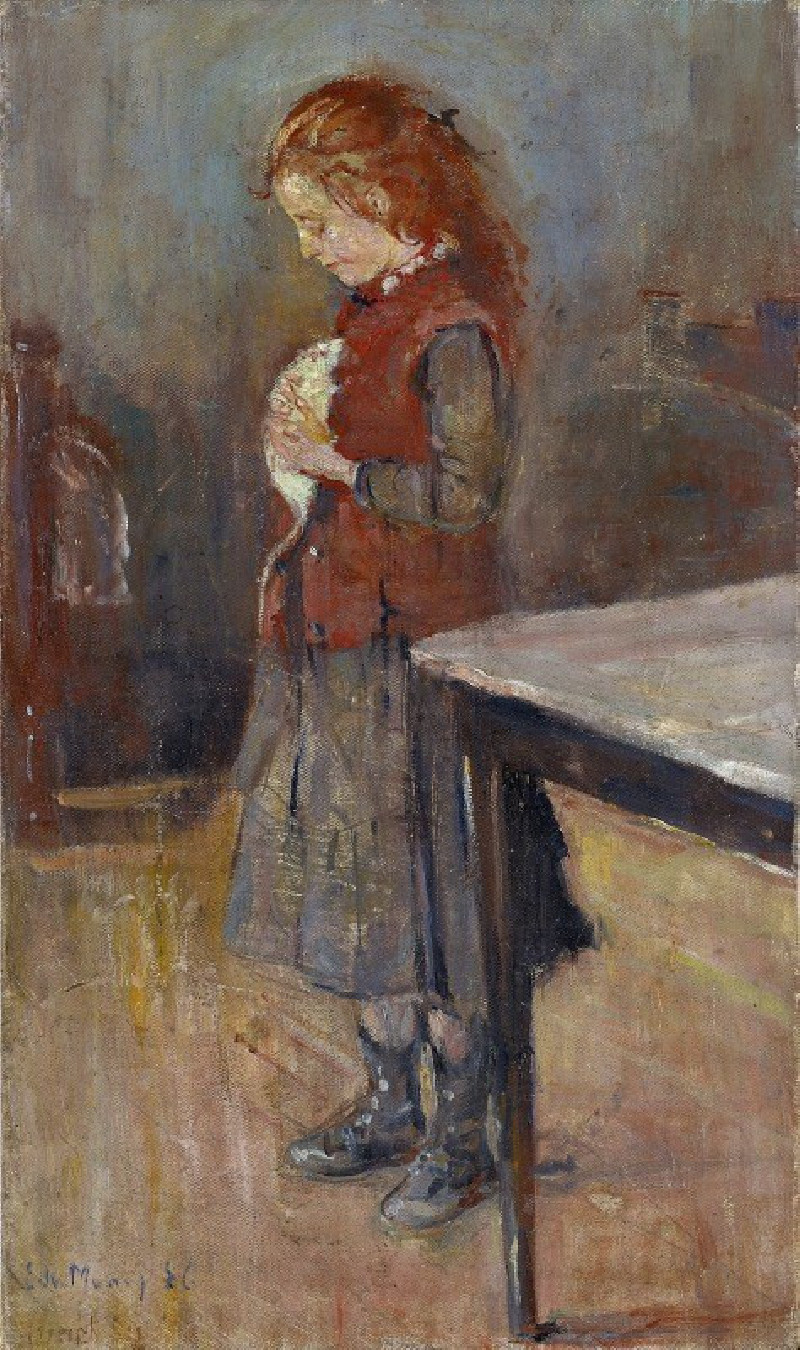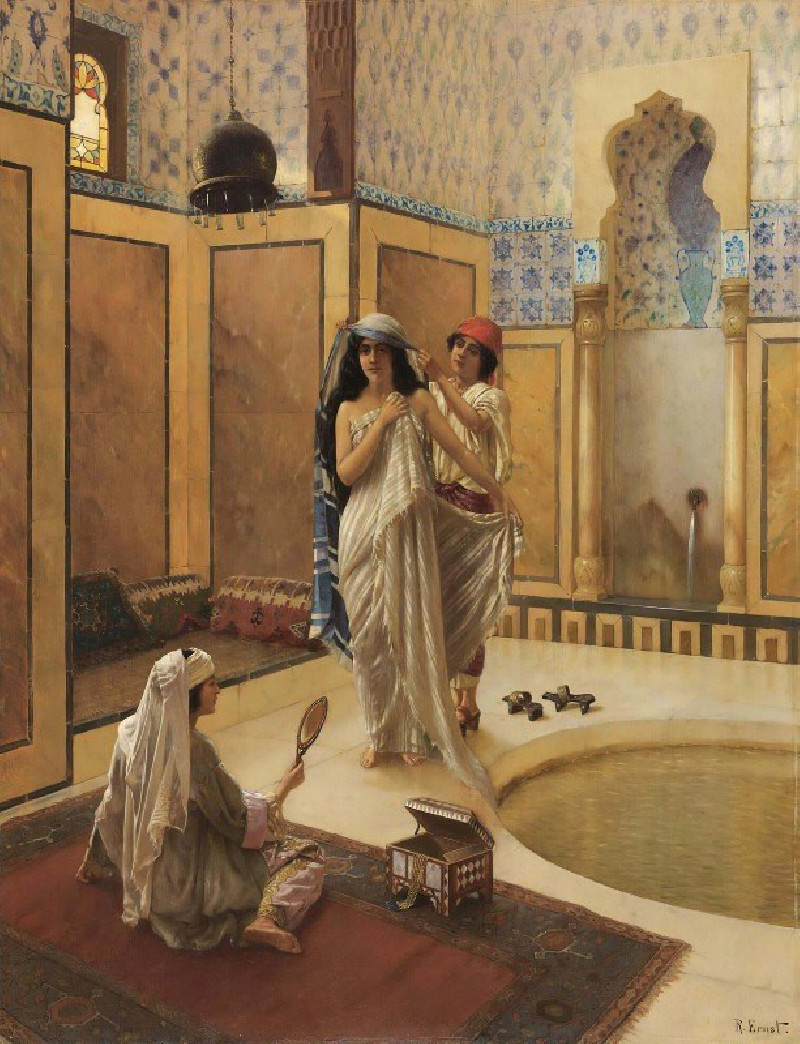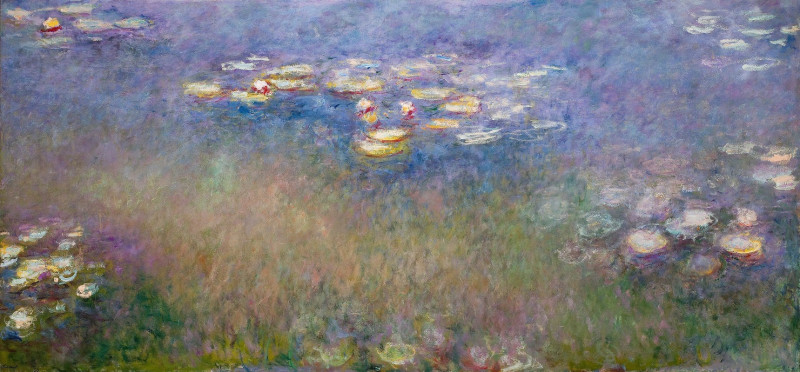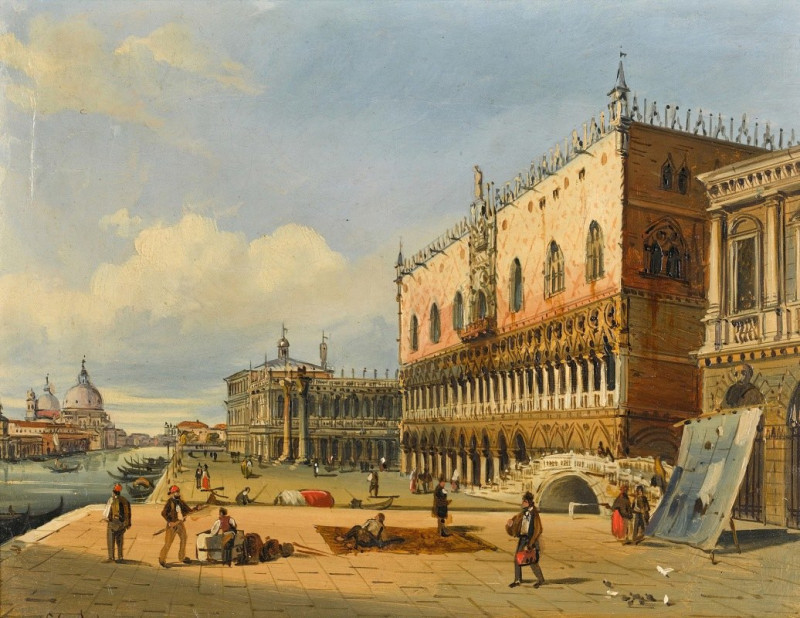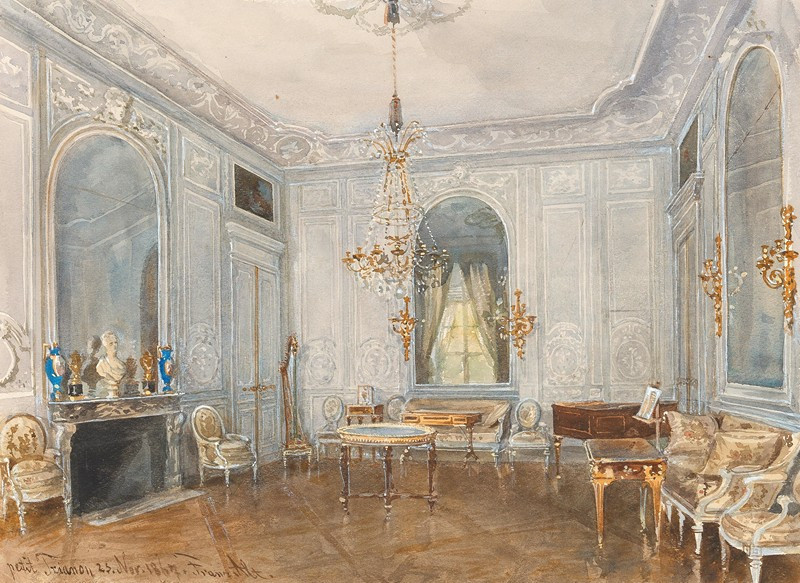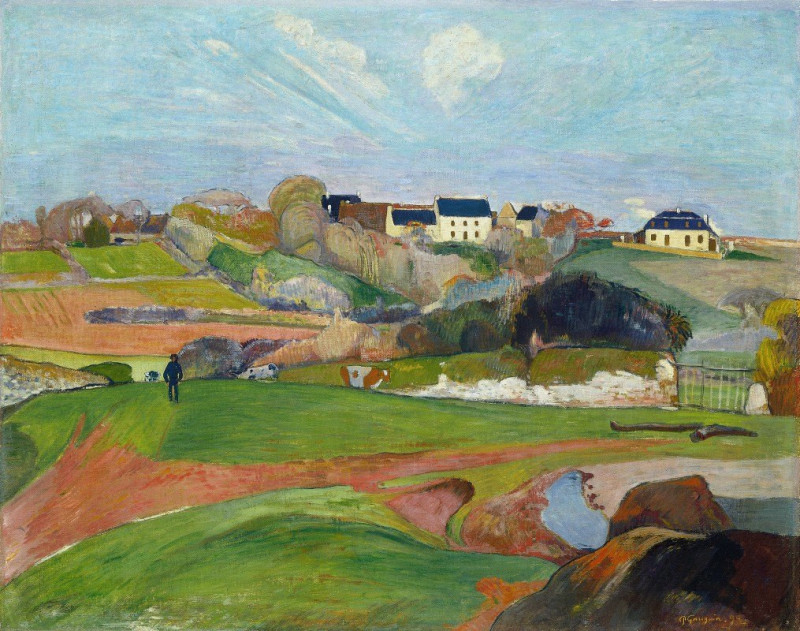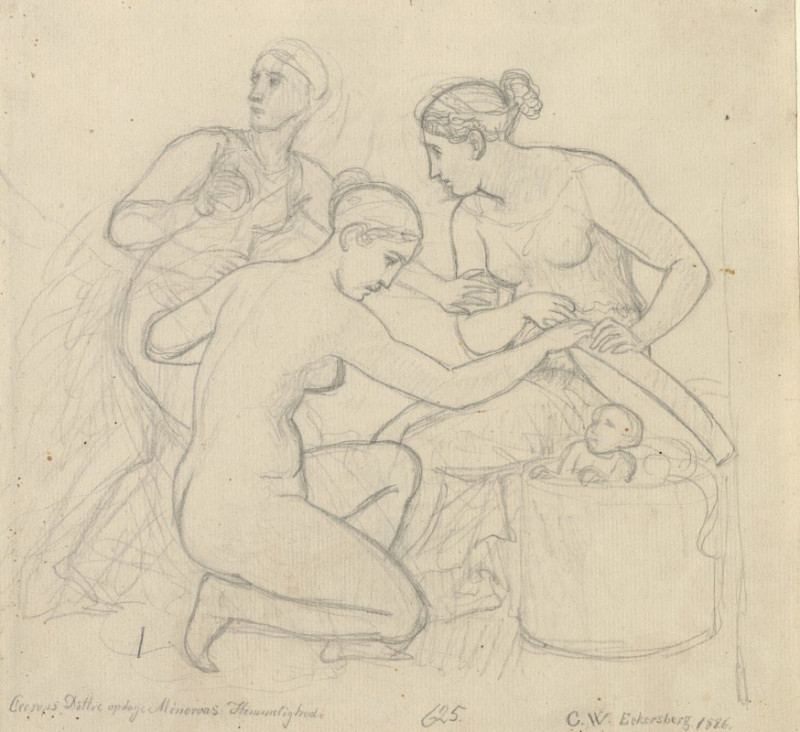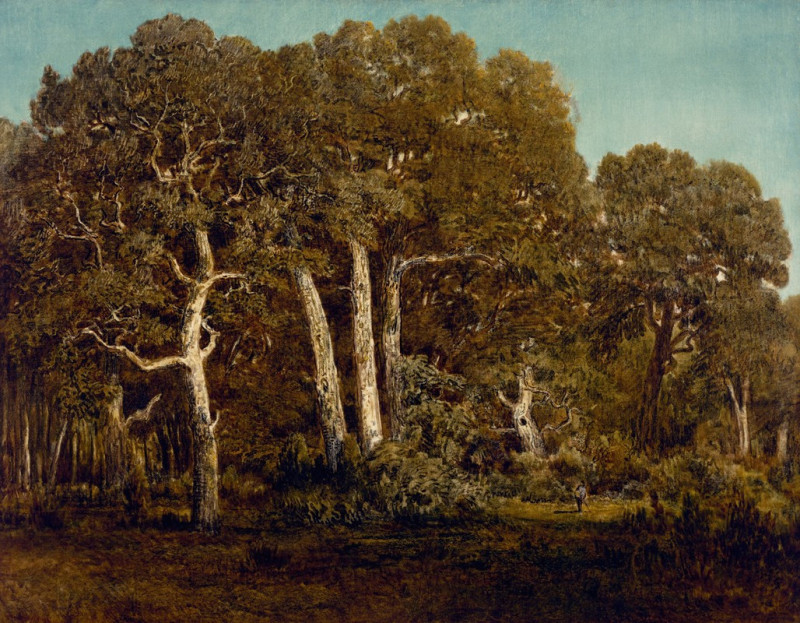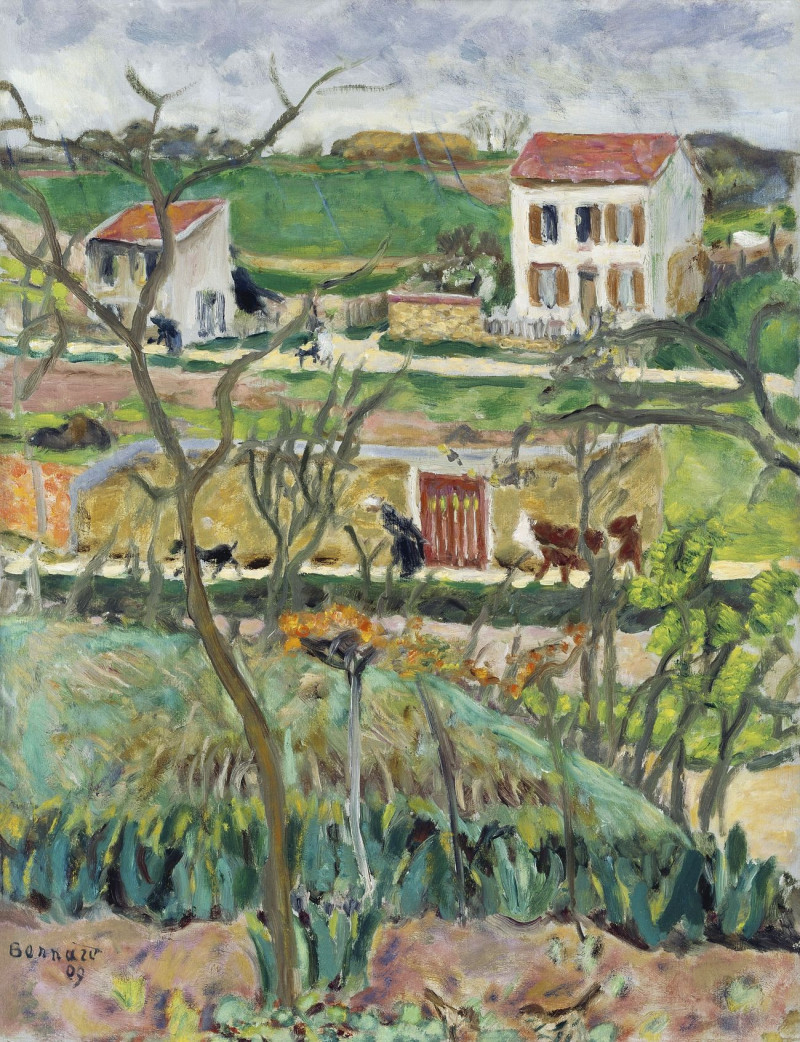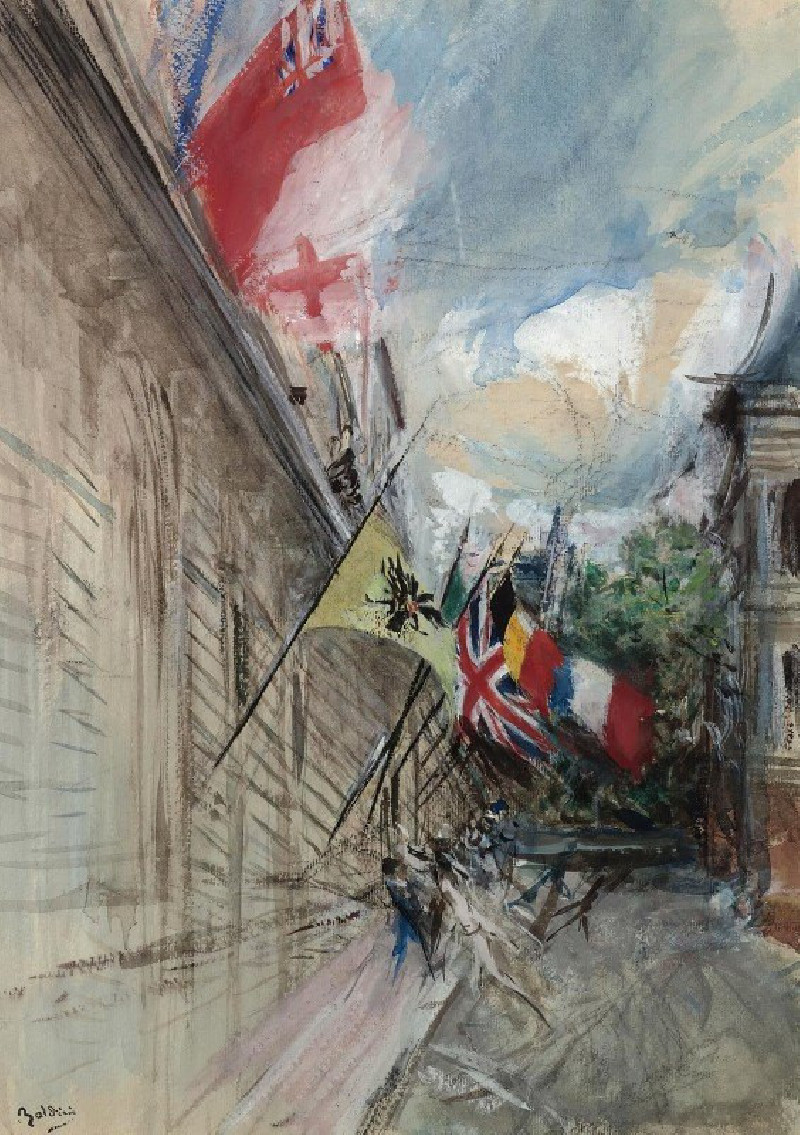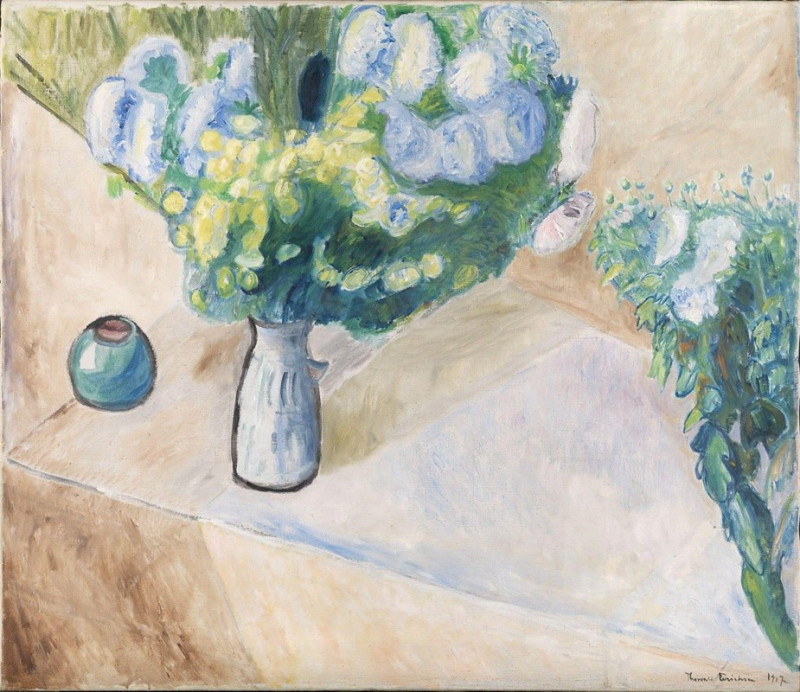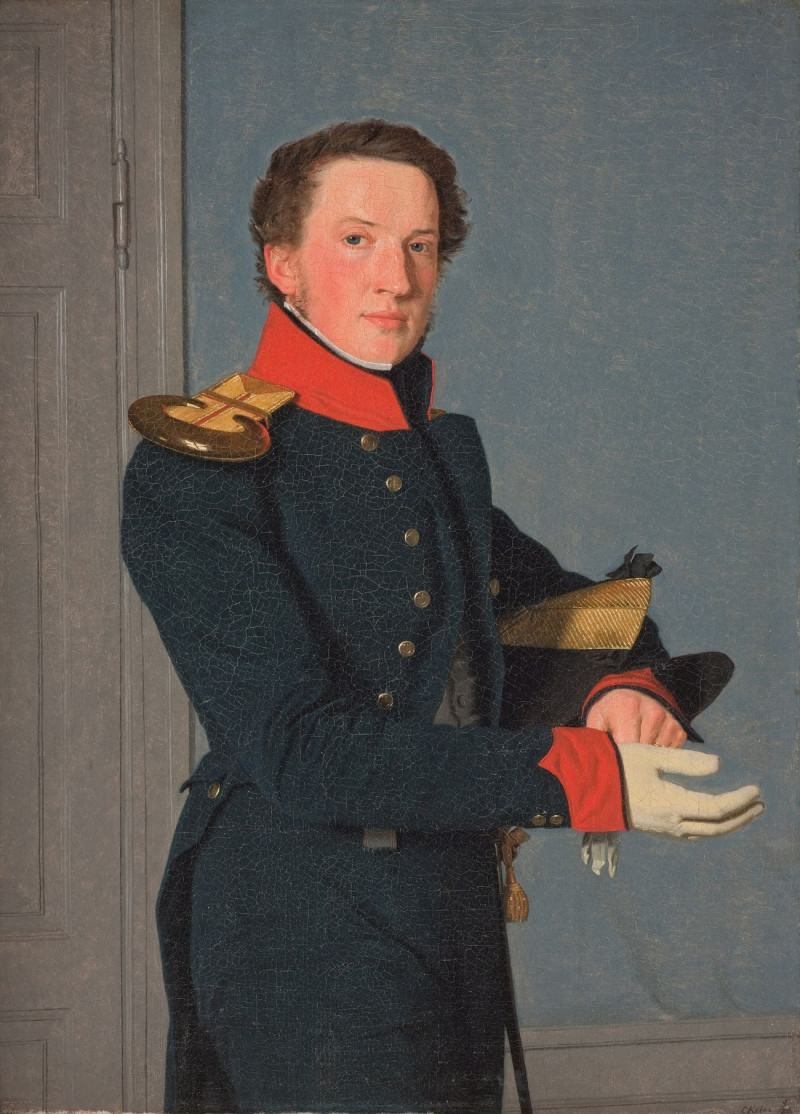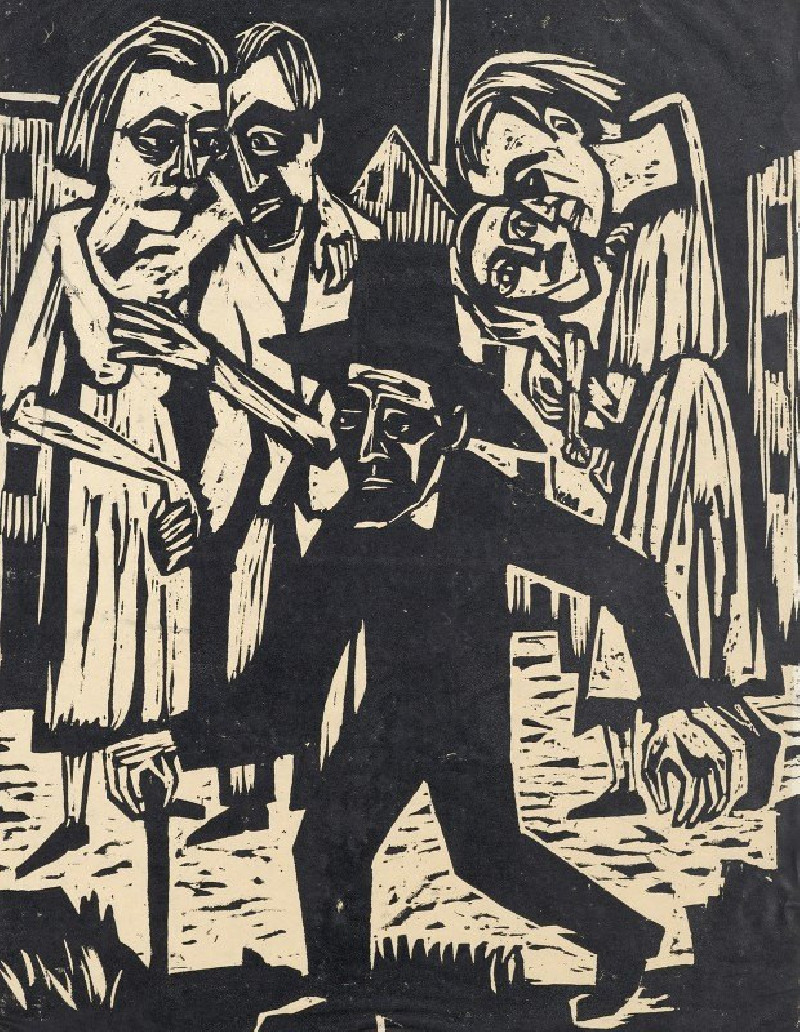Two Women in the Garden (1919)
Technique: Giclée quality print
Recommended by our customers
More about this artwork
"Two Women in the Garden" by Edvard Munch, painted in 1919, is a vibrant and expressive artwork that captures the essence of his distinctive style. The painting portrays two women amidst a lush garden setting, surrounded by a lively arrangement of green hues and botanical elements.One of the women appears prominently in the foreground, depicted with exaggerated and emotive features that convey a deep sense of introspection or melancholy. Her face is turned slightly sideways, allowing us to see her profile as she seems to be holding a bright yellow fruit close to her face, suggesting a moment of engagement or contemplation with nature.The second woman is located more subtly in the background. She is rendered in a less detailed, more abstract manner, mainly visible through her white dress and the outline of her figure. This suggests that she might be walking or standing amidst the trees, forming part of the harmonious environment rather than the primary focus of the piece.Munch's use of color is both bold and nuanced, with the vivid greens of the garden contrasting sharply against the blues and yellows. The tree in the center acts almost as a centerpiece or an axis around which the scene unfolds, its leaves dotted with yellow that might be fruit or flowers, echoing the yellow object near the face of the woman in the foreground.Overall, the painting is a rich tapestry of emotional expression, natural beauty, and dynamic color, typical of Munch's profound and often introspective approach to his subjects.
Delivery
Returns
Edvard Munch (12 December 1863 – 23 January 1944) was a Norwegian painter. His best known work, The Scream (1893), has become one of Western art's most iconic images.
His childhood was overshadowed by illness, bereavement and the dread of inheriting a mental condition that ran in the family. Studying at the Royal School of Art and Design in Kristiania (today's Oslo), Munch began to live a bohemian life under the influence of the nihilist Hans Jæger, who urged him to paint his own emotional and psychological state ('soul painting'); from this emerged his distinctive style.

